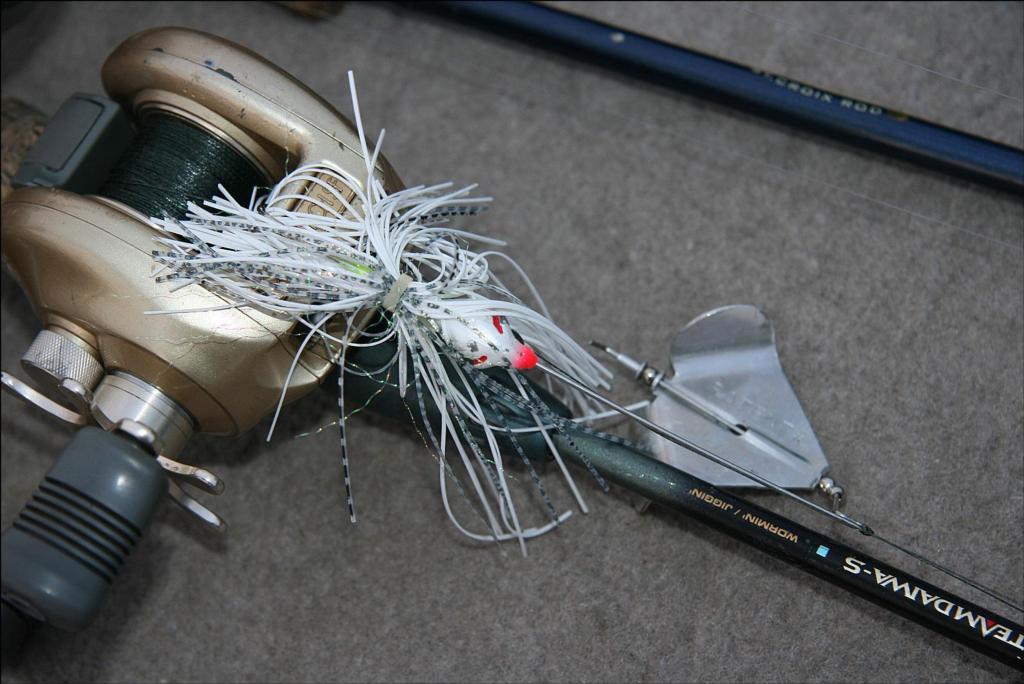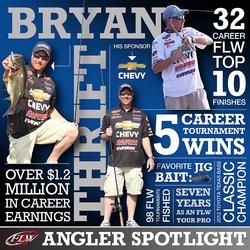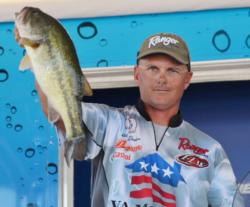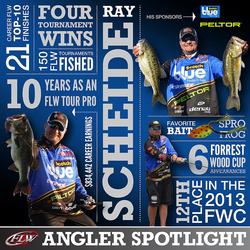Ask the experts
FLW Tour pros weigh in on the optimal techniques to take advantage of the transition from fall to winter

(Editor’s note: This article originally appeared in the 2013 Winter issue of Bass Fishing magazine. To read more compelling articles from Bass Fishing magazine each month, become an FLW subscriber member. If you’d like to sign up for a digital subscription to access articles online, click here).
The buzz
Q: If a brief window of unusually warm weather interrupts an extended period of cold weather, how drastic of an effect will the warm weather have on fishing patterns? What kinds of movements should I watch for from bass?
 A: One of my best days with a buzzbait on Lake Wiley came in that situation. We’d had cold wintertime conditions, and the water was in the mid- to upper 40s. Then we had a week of 70-degree weather, and the water actually climbed back up into the upper 50s. I crushed them on a buzzbait.
A: One of my best days with a buzzbait on Lake Wiley came in that situation. We’d had cold wintertime conditions, and the water was in the mid- to upper 40s. Then we had a week of 70-degree weather, and the water actually climbed back up into the upper 50s. I crushed them on a buzzbait.
When it warms up like that, the fish will move up shallow and get more aggressive. That time of year, especially, bass are going to be keying on baitfish. You’re looking for shad – it’s going to be a pure shad bite. If it gets warm enough, the bass will hit topwater baits; a crankbait or spinnerbait is also really good. Fish something that’s moving and that you can use to cover a lot of water.
—- Bryan Thrift, Shelby, N.C.
Tactical transition
Q: What kind of conditions or bass movements signal to you the transition from traditional “fall” or “late-fall” tactics into “winter” tactics?
 A: The water temperature. When the water temperature drops down lower than 47 degrees it starts getting pretty cold on bass. Usually from 47 degrees up, I like fishing shallow and fast with spinnerbaits and (Storm) Wiggle Warts. You can also still catch bass up shallow on a crawfish pattern on rocky banks. Once it goes below that temperature, it turns into a grub, jerkbait or umbrella rig bite. It seems like bass turn to more of a shad bite, and they start suspending a little more. They start hanging around cedar trees and standing timber.
A: The water temperature. When the water temperature drops down lower than 47 degrees it starts getting pretty cold on bass. Usually from 47 degrees up, I like fishing shallow and fast with spinnerbaits and (Storm) Wiggle Warts. You can also still catch bass up shallow on a crawfish pattern on rocky banks. Once it goes below that temperature, it turns into a grub, jerkbait or umbrella rig bite. It seems like bass turn to more of a shad bite, and they start suspending a little more. They start hanging around cedar trees and standing timber.
—- Robbie Dodson, Harrison, Ark.
Vegetation variations
Q: How late into the year will vegetation hold bass on a typical Southern or Mid-South reservoir, and what kinds of vegetation are best?
 A: November is a good time for grass fishing, until you start getting into the hard cold of winter. December is about the time that it starts getting really cold around here (northwestern Arkansas), when they’ll pull back out and get on a jerkbait bite or umbrella rig bite. But in the South, grass is the first thing I look for in November in a lake with hydrilla. It’s probably where the majority of the bait is when the water temperature gets down into the 50s. Once it gets into the 40s, bass suspend with the bait.
A: November is a good time for grass fishing, until you start getting into the hard cold of winter. December is about the time that it starts getting really cold around here (northwestern Arkansas), when they’ll pull back out and get on a jerkbait bite or umbrella rig bite. But in the South, grass is the first thing I look for in November in a lake with hydrilla. It’s probably where the majority of the bait is when the water temperature gets down into the 50s. Once it gets into the 40s, bass suspend with the bait.
They relate to the grass a lot because it’s its own little ecosystem. It has cover, food and provides everything a bass needs, including oxygen. So when the grass dies, they’ll start to move out. But that’s not to say I’ve never caught them on dead grass – it’s still structure, but it’s not as big a deal as when it’s still alive.
—- Ray Scheide, Dover, Ark.